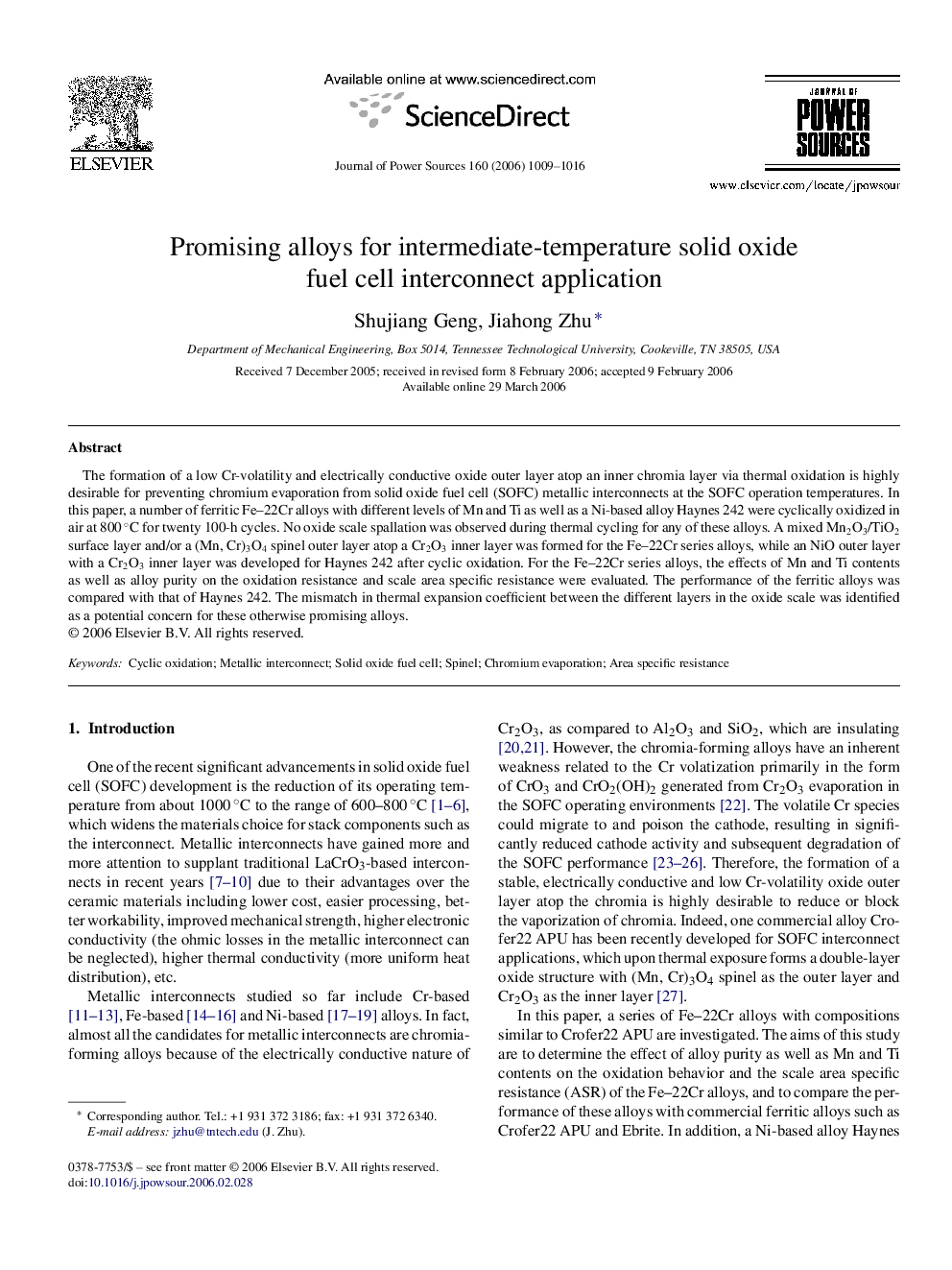| Article ID | Journal | Published Year | Pages | File Type |
|---|---|---|---|---|
| 1287158 | Journal of Power Sources | 2006 | 8 Pages |
The formation of a low Cr-volatility and electrically conductive oxide outer layer atop an inner chromia layer via thermal oxidation is highly desirable for preventing chromium evaporation from solid oxide fuel cell (SOFC) metallic interconnects at the SOFC operation temperatures. In this paper, a number of ferritic Fe–22Cr alloys with different levels of Mn and Ti as well as a Ni-based alloy Haynes 242 were cyclically oxidized in air at 800 °C for twenty 100-h cycles. No oxide scale spallation was observed during thermal cycling for any of these alloys. A mixed Mn2O3/TiO2 surface layer and/or a (Mn, Cr)3O4 spinel outer layer atop a Cr2O3 inner layer was formed for the Fe–22Cr series alloys, while an NiO outer layer with a Cr2O3 inner layer was developed for Haynes 242 after cyclic oxidation. For the Fe–22Cr series alloys, the effects of Mn and Ti contents as well as alloy purity on the oxidation resistance and scale area specific resistance were evaluated. The performance of the ferritic alloys was compared with that of Haynes 242. The mismatch in thermal expansion coefficient between the different layers in the oxide scale was identified as a potential concern for these otherwise promising alloys.
